Being a pet parent is all about making decisions, and picking a dog food is one of the most important choices you’ll ever make.
And unfortunately, it’s a decision that often drives owners crazy.
Don’t worry: We are here to help!
We’ll cut through the noise, let you know exactly what you need to look for, and explain how to choose a dog food for your beloved furry bundle of joy.
And spoiler alert: It’s going to be much easier than you think.
Good News: Most Modern Dog Foods Are Pretty Darn Solid
First things first: Most modern, mainstream dog foods will work perfectly well for the vast majority of dogs.
The most important guidelines to follow are:
- Pick a food that is formulated to meet the AAFCO guidelines for your dog’s life stage
- Make your selection in conjunction with your vet
- Select a dog food that addresses any specific health ailments your dog has
If you do all that, your doggo will almost certainly receive adequate nutrition and enjoy a much higher quality of life than he would if he were born a few decades ago or lived outside of the western world.
So, don’t stress out about your dog’s food.
But, with all that said, some dog foods are likely better choices than others. And we’d like to help you select one that is not only acceptable but as close to ideal as is possible.
We’re trying to make this really easy on you. Here’s how everything works:
- Start by picking a dog food brand that meets the three mandatory criteria. Do this, and you’ll almost certainly end up with a good food for your pup.
- If you want to go further and pick the very best possible food for your pooch, continue moving down the list, and find a food that satisfies our second-tier criteria as well.
It’s seriously that simple.
The Three Mandatory Dog-Food Selection Criteria
Start picking a dog food by considering the following three questions. If you cannot answer “yes” for each, then look for another food.
#1 Is the food formulated to meet the AAFCO guidelines for your dog’s life stage?
Your pet’s food must provide the recommended quantities and ratios of vitamins, minerals, and macromolecules (proteins, fats, and carbohydrates) for his or her life stage and ultimate size.
To do so, pick a dog food that’s designed to provide “complete and balanced nutrition.”
Generally speaking, you’ll want to avoid foods designed to be used for “intermittent or supplemental feeding.” The only exceptions would be cases in which your vet has recommended that you select one formulated in this manner, or you are using it supplementally (such as using the food as a topper).
If a food does not feature one of the three phrases listed below, exclude the food from consideration (these phrases are listed in decreasing order of desirability):
1. “Animal feeding tests using AAFCO procedures substantiate that [Product Name] provides complete and balanced nutrition for [Life Stage].”
2. “[Product Name] is formulated to meet the nutritional levels established by the AAFCO Dog (or cat) Food Nutrient Profiles for [Life Stage].”
3. “[Product Name] provides complete and balanced nutrition for [Life Stage] and is comparable to a product which has been substantiated using AAFCO feeding tests.”
In practice, this criteria isn’t hard to meet.
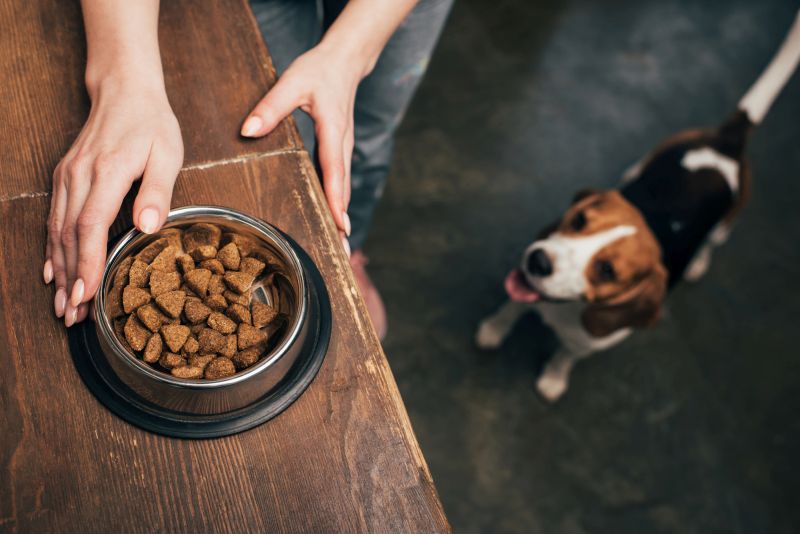
But, there are different AAFCO guidelines that reflect different feeding goals. And this is something you do need to pay attention to.
For example, some foods are designed for “maintenance,” some are designed for “growth and reproduction,” and some are designed for “all life stages.”
Don’t worry — it’s really simple:
- Feeding an adult dog who’s not pregnant or nursing? You want a food designed for maintenance or all life stages.
- Feeding a puppy? You want a puppy dog food designed for growth and reproduction or all life stages.
- Feeding a pregnant or nursing mom? You want a food designed for growth and reproduction or all life stages.
That’s all there is to it!
In fact, you can just look for foods designed for “all life stages” — they’re always acceptable.
Large pooches have slightly different nutritional needs than small or medium-sized dogs.
So, if your pet is likely to exceed 70 pounds at maturity, you’ll need to look for a food that specifically states it is suitable for large-breed dogs (as you can see in the AAFCO label photo above).
#2 Does the food address any specific health concerns your dog has?
In addition to meeting the AAFCO’s guidelines for complete and balanced nutrition for the appropriate life stage, your dog’s food must address any specific health concerns he has.
Consider the following examples, but there are countless others:
- Dogs with food allergies will need hypoallergenic dog food recipes that are made without the irritating ingredient. You’ll likely want to seek out dog foods with limited ingredient diets, which means they are made with as few ingredients as possible to avoid certain allergens.
- Dogs suffering from kidney failure may need a renal-support dog food recipe.
- Overweight dogs may need a weight-management formula.
It’s also wise to consider your pet’s digestive system when selecting a food.
Some pets can’t digest high-fiber foods very well. So, you’ll want to avoid these foods if your dog has a history of stomach issues to keep your pet’s tummy feeling its best.
You may not pick the perfect food on the first try – you may, for example, not know that your pet’s digestive system will revolt anytime he consumes a food containing cheese.
But, when you do know in advance, be sure to keep these types of things in mind and just be prepared to make a switch if need be.
#3 Does your vet support your choice?
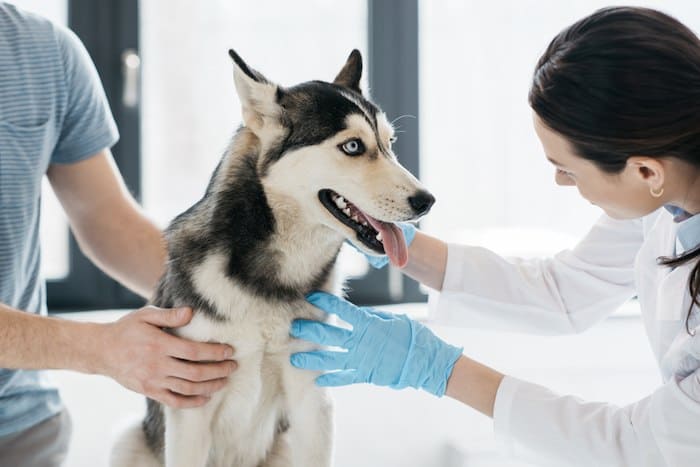
It is imperative that you include your vet in the selection of your pet’s food.
This is one of the simplest criteria to satisfy when trying to decide which food is best for your pet. Just ask your veterinarian for a food recommendation upfront or solicit your vet’s blessing after picking a food that you like.
Easy-peasy.
Your vet not only understands canine nutrition better than you do, but he or she is also familiar with your pet’s health concerns. So, by working with your vet, you’ll be more likely to end up with a healthy dog food that’ll keep your four-footer in tip-top shape.
Second-Tier Dog Food Selection Criteria: Narrowing Food Down Further

As long as your dog’s food meets the three criteria outlined in the previous section, you’re very unlikely to experience serious problems.
But owners can dig deeper in an effort to surpass “adequate” nutrition and find one of the safest, tastiest, and most nutritious foods for their specific dog.
This primarily means thinking about the brand in question, their manufacturing practices, and the safety protocols they implement.
But while most modern dog food manufacturers satisfy the majority of these criteria, few satisfy them all. So, you may have to decide which criteria are most important to you.
The following six questions should help you narrow down your dog-food choice even further.
#1 Does the brand have a canine nutritionist on staff?

The best dog food manufacturers employ one or more full-time, credentialed veterinary nutritionists.
Ideally, such individuals should have a PhD in animal nutrition and be board certified by the American College of Veterinary Nutrition (or the European equivalent: the European College of Veterinary Comparative Nutrition).
Typically, large, established food brands are more likely to employ nutritionists, as the services these professionals provide are often expensive.
Just note that there is a difference between veterinarians and veterinary nutritionists.
The former can certainly help keep your pet healthy and should be involved in your dog-food selection process, but only the latter has received the additional training necessary to properly formulate a nutritious dog food.
So, don’t be fooled by dog food manufacturers who place labels like “veterinarian-approved” or “formulated by vets” on their products. Instead, you’ll want to look for a product that’s been crafted with the assistance of a proper veterinary nutritionist.
However, this can take some digging – not all manufacturers will include this kind of information on their packaging. You may need to check out their website or even drop them an email to verify.
#2 Does the company perform regular safety checks?

Any batch of food can become contaminated by bacteria, fungi, or other hazardous substances, but the best companies perform routine testing to help catch unsafe food before it reaches the consumer. The more frequent the testing is conducted, the better, and the best brands will test every batch of food produced to quickly catch potential problems.
In-house testing is better than no testing at all, but the very best brands obtain third-party certifications of their testing procedures.
#3 Does the brand cook or otherwise pasteurize all proteins to eliminate pathogens?

Contrary to popular opinion, raw proteins often contain bacteria or other microorganisms that are harmful to humans and dogs. So yes, your dog can get sick from eating raw meat, and you can get sick from just having a lot of raw meat around your kitchen!
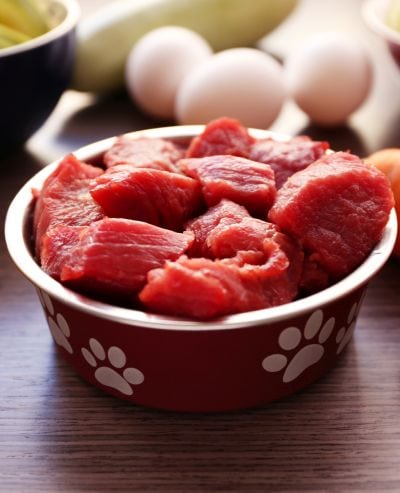
This doesn’t mean a given owner may not be lucky and feed raw meat to their pet without issue, but such approaches unnecessarily tempt fate.
Even more concerning, some of the microorganisms found in the raw proteins that are used in dog foods have been found to be antibiotic resistant, which presents very serious issues to you, your pet, and the world at large.
And the risks these foods present don’t only occur during preparation and inside your dog’s digestive system; these harmful microorganisms may remain infectious once expelled from your pet’s body.
This means collecting and disposing of the waste produced by a dog who consumes raw meat is also hazardous.
Accordingly, you should select a food that contains only fully cooked proteins.
Freeze-dried dog foods and proteins may be somewhat safer than completely uncooked proteins, but they’ve still been shown to contain harmful pathogens.
The only possible exception to this guideline involves proteins that’ve been pasteurized via high pressures.
This technology is thought to allow for the safe use of raw proteins, as the pressurization process is thought to kill most common pathogens. However, more research is needed to substantiate this assumption.
Of course, there will always be some owners who are convinced that the pros of raw feeding outweigh the cons. But for the average owner, feeding your dog a raw diet is not a realistic, necessary, or desirable option
#4 Does the brand manufacture the food in a Western country?

Some countries impose more stringent safety and quality-control standards than others. So, to keep your pooch safe, be sure to select a dog food made in one of the following countries:
- United States
- Canada
- Australia
- New Zealand
- The United Kingdom
- Any of the members of the European Union
There are differences between these countries (or groups thereof), but they all impose a minimally acceptable set of standards.
#5 Does the brand utilize ingredients sourced in Western countries?

Selecting a food that is manufactured in facilities based in the US or another Western country is important, as it ensures that modern safety and quality-control practices should be implemented.
However, it is not the only important criteria to consider; you should also search for a food that is made with ingredients sourced from the U.S. and other Western countries.
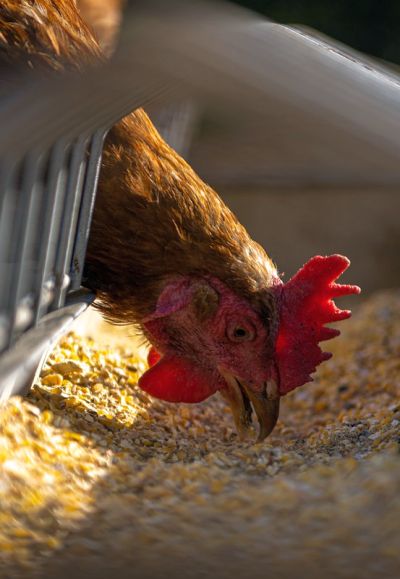
This will help you avoid foods that may contain tainted, spoiled, low-quality, or mislabelled ingredients (a common problem among foods that source ingredients from developing countries).
Unfortunately, this can be challenging and there aren’t a ton of brands in the marketplace that satisfy this criterion.
The reason is that a handful of products are primarily made in China and other developing nations.
This limits the number of places a manufacturer can source its ingredients from.
However, many fresh dog foods and a handful of kibbles are made from ingredients only sourced from the U.S. and other Western countries.
Just note that, if you must pick a food that includes ingredients sourced from non-Western countries, you’ll still want to stick to those that source the most important ingredients from the U.S. and other countries with high safety standards.
This most notably includes:
- Farmed Proteins: Beef, chicken, pork, lamb or other farmed proteins that are sourced from Western countries are far less likely to have been treated with unnecessary antibiotics or contaminated by potentially harmful contaminants than those raised in developing nations are.
- Produce: Because fruits and vegetables are often exposed to pesticides, it’s wise to stick to those harvested from modern, Western countries with sensible safety protocols in place. The use of pesticides in crop production is not necessarily harmful, but the crops must be washed properly before they’re used to make dog food. And this is more likely to occur in the USA and other Western countries than those who don’t impose sufficient safety guidelines.
- Grains: Like produce, grains are often exposed to pesticides and herbicides, so it’s important to choose a dog food brand that utilizes grains grown in Western countries, under strict safety standards.
- Any ingredients at the top of the ingredient list: The bulk of the ingredients at the top of any high-quality food’s ingredient list should fall into one of the three categories discussed above. However, because ingredients are listed by weight, it’s important to ensure that all of the things included in significant quantities are sourced from Western countries.
#6 Does the brand own the kitchens in which the food is prepared?

Companies who own and manage their kitchens have much more control over the safety and quality-control procedures employed than brands who outsource food preparation. By contrast, brands that utilize third-party manufacturers have less control over the process and safety protocols.
This is not to suggest that kitchens owned and operated by third parties are inherently inferior to those owned by dog food brands. However, as a general rule of thumb, owners will be best served by purchasing dog foods made by brand-owned manufacturers or kitchens.
Third-Tier Criteria: Ingredient List Investigation

While ingredient lists are typically one of the first things owners consider when seeking a pet food, such concerns are usually of minor importance, provided that you satisfy the mandatory criteria discussed earlier (meeting the AAFCO guidelines for your pet’s life stage, addressing any specific health concerns your pet has, and getting the green light from your vet).
Nevertheless, when trying to choose between two similar dog foods that satisfy the mandatory and second-tier criteria discussed above, it is reasonable to turn your attention to the ingredient list.
To help, we’ve established six additional questions owners may want to consider when picking a chow for their canine.
#1 Does the dog food feature a whole protein at the top of the ingredient list?
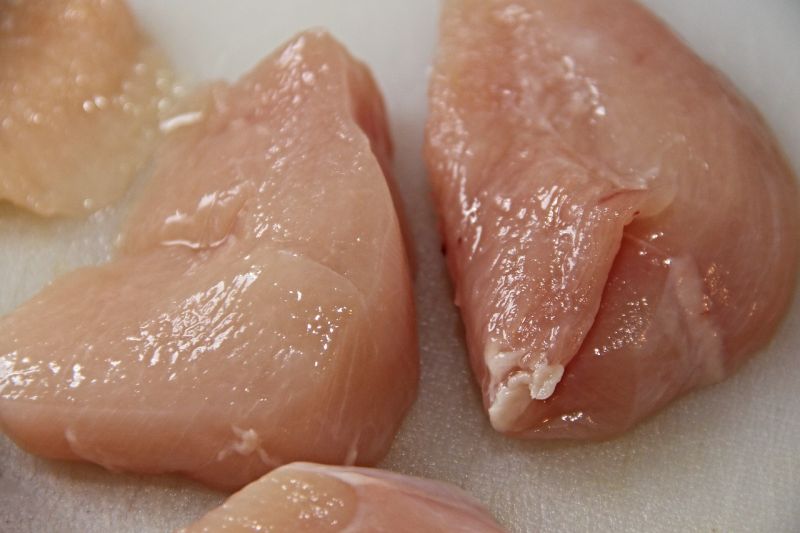
Dogs are omnivores, but they rely heavily on meat-based proteins to fuel their bodies. Accordingly, almost all high-quality dog foods will list some kind of meat as the first ingredient.
This includes familiar ingredients, such as chicken, beef, or pork. Just note that they may sometimes be described a bit differently (e.g., deboned chicken) — that is not a problem.
Generally, foods that do not include a whole protein at the top of the ingredient list will instead feature one of three things:
- A meat meal
- A carbohydrate
- Water or broth in the case of canned foods
Water or broth is a perfectly acceptable first ingredient for canned foods. This is pretty common, and no cause for concern.
The other two possibilities require more thought.
Meat Meals
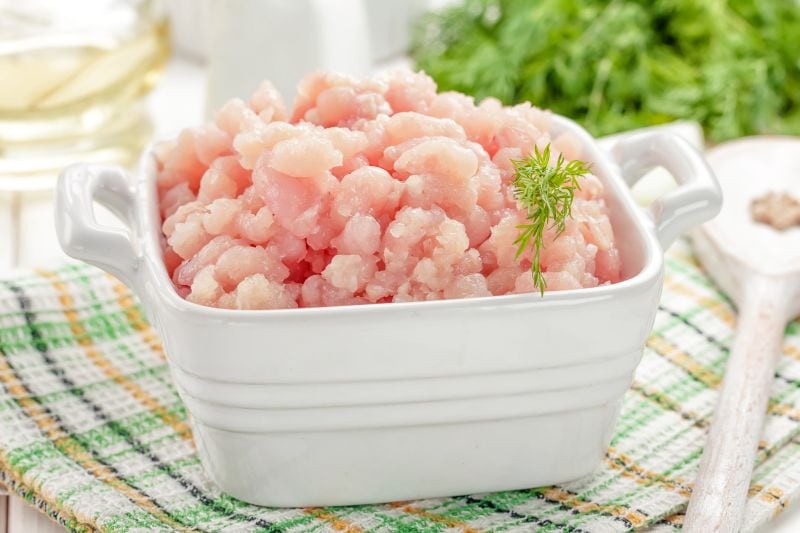
There is some debate about the relative value of whole proteins as opposed to (properly identified) meat meals at the top of an ingredient list.
Whole proteins certainly sound more appetizing and nutritious to owners than meat meals, but they aren’t necessarily healthier than processed proteins. There are some minor nutritional differences between the two options, but the most notable difference is that meat meals are denser protein sources than whole meats are, as whole meats are full of water.
So, theoretically, foods that feature properly identified meat meals at the number one spot on the ingredient list shouldn’t be cast aside automatically. But while there are some high-quality foods that utilize meat meals at the top of their ingredient lists, manufacturers often do so solely as a cost-saving measure.
Accordingly, we encourage owners to view the presence of a whole protein at the top of the ingredient list as a rough proxy for quality. Foods that begin with a meat meal aren’t always poor choices, but they definitely deserve further scrutiny.
Carbohydrates

A more problematic issue occurs when foods list a carbohydrate source (often corn) at the beginning of the ingredient list.
As long as the food meets our three mandatory criteria, it should still be a decent choice. However, when trying to pick the very best food available for your pet, it is generally preferable to select one that does not list a carbohydrate at the top of the ingredient list.
As we’ve mentioned before, there’s nothing wrong with most dog-safe carbohydrates. Dogs digest most cooked grains with ease, and they’re a valuable source of calories, vitamins, minerals, and fiber.
Just do your best to opt for foods made with whole grains, as they typically present a more attractive nutritional profile than enriched grains.
Looking for a food that lists a whole protein at the top of the list is important, but it should not be considered mandatory, either. And the reason is something called “ingredient splitting.”
In a nutshell, ingredient splitting works like this:
Let’s say we have a hypothetical dog food that’s made of chicken and granola (just hear us out – it’s an easy-to-understand analogy).
By weight, the food contains more granola than chicken. Understandably, the manufacturer isn’t enthused about this – they’d rather list chicken at the top of the list.
Enter something called ingredient splitting.
Essentially, by listing each constituent part of the granola (all of which are present in lesser quantities than chicken), they can keep chicken at the top of the list.
Now, instead of the ingredient list being:
Granola, chicken.
It would be something like:
Chicken, oats, puffed rice, peanuts, almonds, dried apricots, honey.
But it’s still granola and chicken – they’ve just listed the ingredients in a way that makes the food seem more appealing.
The ultimate lesson here is that if you’re comparing two otherwise-identical foods, pick the one that starts with a whole protein instead of a meat meal or carbohydrate.
But don’t worry about it if you’ve found a food that meets our three primary criteria and seems otherwise awesome for your pet – even if corn or wheat is the first listed ingredient.
#2 Are the meat meals and by-products properly labeled?
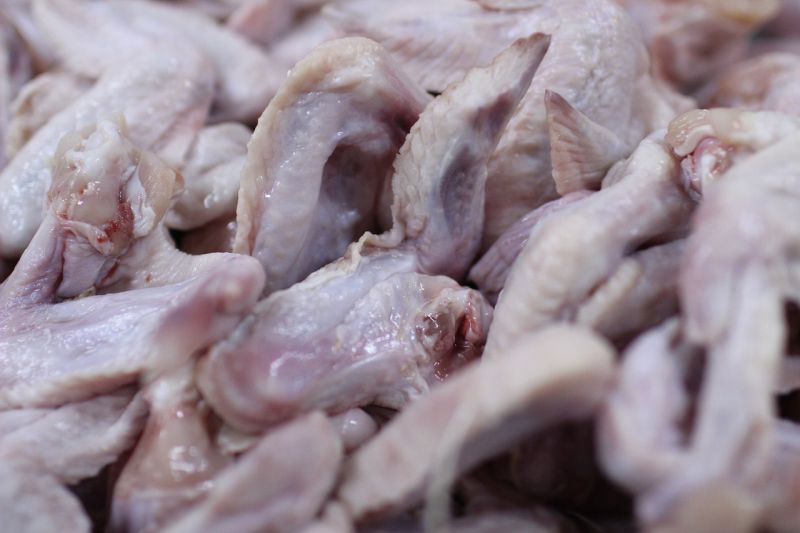
Dog food manufacturers utilize a number of different meat-based proteins in dog foods. This not only includes whole proteins like the ones in your refrigerator, but also things like meat meals and meat by-products.
Meat meals and meat by-products may not sound appetizing to humans, but they’re often nutritious, and most dogs like the way these types of ingredients taste.
However, it is imperative that you stick to foods that properly identify these types of ingredients, so that you can be sure what your dog is consuming.
For example, “chicken meal,” “chicken by-products,” and “chicken by-product meal” are all acceptable, but “meat meal,” “meat by-products,” and “meat by-product meal” are not. Foods containing “poultry meal” or derivations thereof are likely acceptable, if not ideal. Similarly, “menhaden fish meal” is superior to “fish meal.”
#3 Does the brand avoid questionable and unnecessary ingredients?
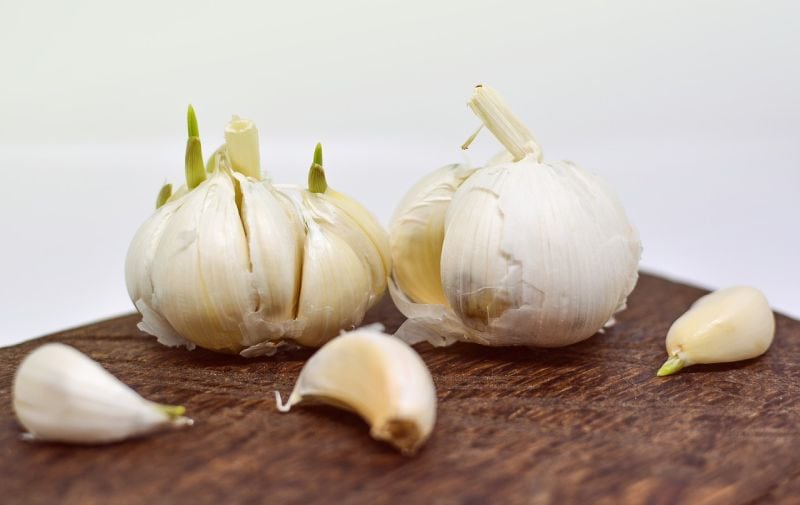
The vast majority of ingredients used in modern dog foods are likely safe for dogs. In fact, most are categorized as GRAS (generally recognized as safe) ingredients.
However, there are a handful of ingredients that may not be safe over the long term.
This does not imply that these ingredients are known to be harmful – were that the case, they’d already be prohibited.
Instead, this is a list of ingredients for which more long-term research is required. Accordingly, many pet owners feel better selecting a food that is made without the following ingredients:
- BHA (Butylated Hydroxyanisole)
- BHT (Butylated Hydroxytoluene)
- Ethoxyquin
- Artificial colors (Blue 2, Red 40, Yellow 5 and 6, 4-MIE)
- Caramel color
- Propylene Glycol
- Garlic
- Sodium Hexametaphosphate
- Carrageenan
#4 Does the dog food include useful supplements?
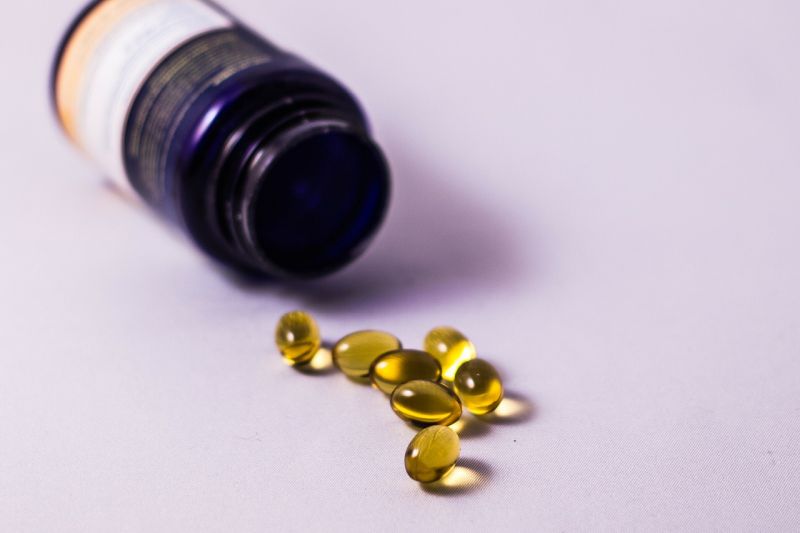
Things like probiotics and joint-supporting supplements are not necessary for every dog’s health, but they are likely beneficial in many circumstances. They are unlikely to harm your pet and they are often a good indicator that the manufacturer is striving to create a high-quality food, which will help your dog feel his best.
Here are some of the supplements most commonly added to dog foods:
- Glucosamine
- Chondroitin
- Probiotics
- Omega-3 Fatty Acids
However, when considering foods that contain these supplements, it is important to note the quantities in which they’re provided. Some foods list these types of supplements on the label but include them in quantities which are likely too low to provide the desired benefits.
While there are plenty of options on the market for dog foods that include probiotics or glucosamine in the formula itself, owners also always have the option of adding the supplement via an additional powder, pill, or liquid mix-in.
#5 Does the food include whole, minimally processed grains?

Despite notions to the contrary, grains are not bad for most dogs.
The overwhelming majority of dogs digest cooked grains perfectly well, and they can serve as an important source of calories, vitamins, and minerals.
In fact, we generally recommend that owners select grain-inclusive dog foods avoid grain-free recipes unless there is some compelling need to do so (such as dogs with unique nutritional needs or bona fide grain allergies).
Part of the reason we recommend grain-inclusive foods is that there is some evidence linking grain-free foods to something called dilated cardiomyopathy. Now, causation has yet to be established, and there’s a lot to be learned about the connection between DCM and grain-free foods. But until we understand this phenomenon better, it just makes sense to avoid grain-free foods when possible.
However, not all grains are created equally. Some are undoubtedly better for pets than others.
But despite the differences in the most common grains, one thing is clear: Whole grains (which contain the entire grain head, as opposed to enriched grains, which are solely composed of the fiber-deficient, calorie-dense core of the seed) are better for dogs than processed grains are.
So, while there’s nothing wrong with, say, corn, whole wheat is a better option for your dog.
#6 Does the food contain antioxidant- and omega-3-rich ingredients?
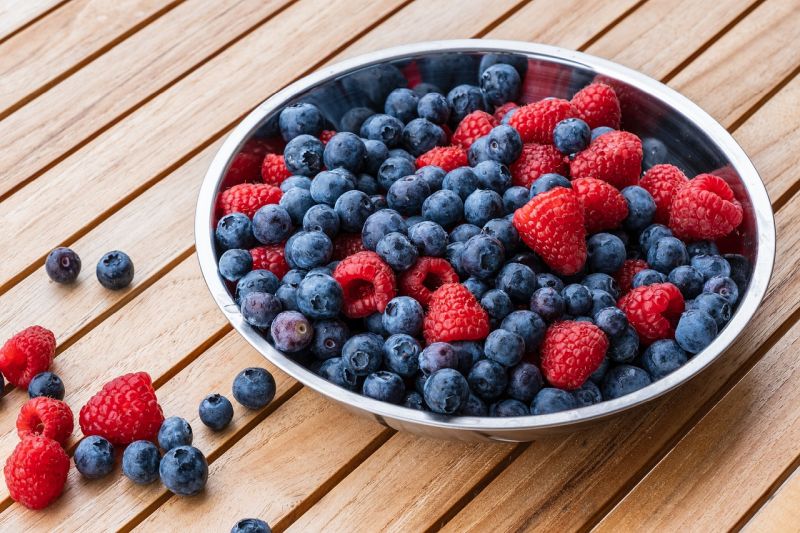
Just like humans, most dogs benefit from eating a broad diet, made from a variety of nutritious ingredients. This will not only help to prevent nutritional deficiencies, but it’ll also likely help please your pup’s palate too.
Remember, while dogs should primarily subsist on a meat-based diet, they are omnivores, who require fruits and vegetables in their diets too.
Fruits and veggies not only serve as a source of vitamins, minerals and fiber, some (particularly dark or brightly colored varieties, such as blueberries and carrots) are also rich in antioxidants – chemicals that help prevent cell oxidation and (likely) support immune function.
Some of the most common fruits and vegetables that high-quality dog foods incorporate into their recipes include:
- Blueberries
- Blackberries
- Cranberries
- Spinach
- Carrots
- Pomegranate
- Parsley
- Kelp
- Pumpkin
- Sweet potatoes (which are also used as a carbohydrate source in many grain-free foods)
Omega-3s are fatty acids found in some foods. They play a number of roles in your pet’s health, but a few of the most notable things they do is to reduce inflammation, promote coat and skin health, and help ensure proper brain and eye development in puppies.
Some of the best sources of omega-3s include:
- Salmon
- Salmon oil
- Herring
- Sardines
- Menhaden fish meal
- Flaxseed
- Flaxseed oil
- Soybean oil
- Canola oil
By selecting a food that contains one or more of these ingredients, you can help ensure your pet will get the omega-3 fatty acids he or she needs.
One other thing owners must consider is the type of food they want to give their dog. Do you want to opt for a regular kibble, or do you want a canned or fresh option?
Generally speaking, it doesn’t matter; the other criteria we’ve laid out are more important for your dog’s overall health. That said, there are differences between the three, which will outline below.
-
- Fresh dog foods are undoubtedly the best choice, as they are often made with the highest quality ingredients and they usually please pup palettes more than any other option. The downside to fresh foods is their price — these are very expensive foods, which some owners simply won’t be able to afford. Just be sure to stick to fresh foods featuring fully cooked proteins, and look for ones that slightly exceed the AAFCO guidelines, as this will help offset the minor nutritional differences that can occur between different batches of fresh foods.
- Wet dog foods are a great option for owners looking for a food that’ll keep their dog’s lips smackin’ without breaking the bank. Wet foods are still more expensive than kibbles, but the price difference is manageable for many owners. Unfortunately, it can be slightly more difficult to find a wet food that satisfies all of the criteria discussed, and you may also find it necessary to feed your dog higher quantities of wet foods to ensure adequate nutrition, given the incredibly high moisture content of some varieties. Also, wet foods fail to provide the tooth-scraping dental benefits that kibbles (and some fresh food ingredients) provide.
- Kibbles may not be quite as tasty as wet or fresh foods, but they’re perfectly suitable and the most affordable dog food option. You can always use a topper or spruce up a bowl of kibble with a spoonful of olive oil, yogurt, or some shredded cheese, if you want to spoil Spot. Kibbles also have relatively low moisture content, which helps keep them “shelf stable,” and the hard kibble pieces can help to clean your doggo’s teeth as he chews.
Canine Considerations: Two Final Things to Think About When Picking a Dog Food
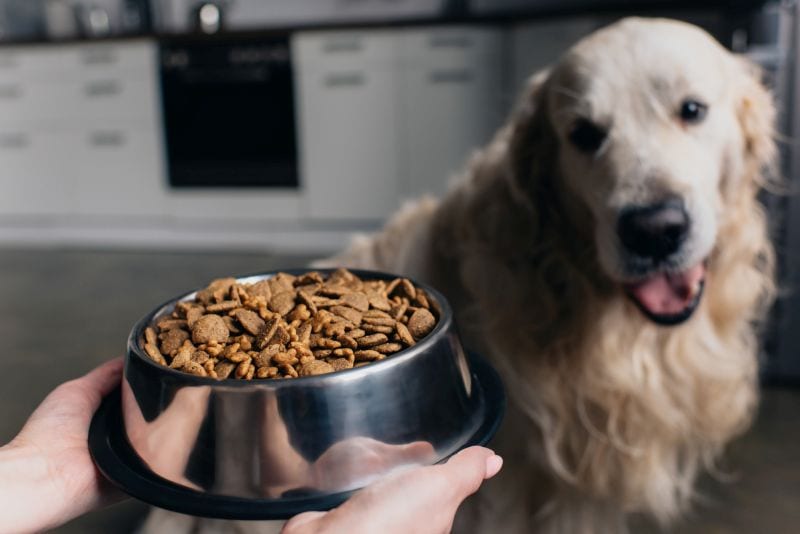
Understandably, most owners focus on safety and nutritional value when picking a food for their pet. Cost also plays an important role in these decisions for many owners.
But there is one more key set of criteria to consider: Your dog’s opinion of and reaction to the food.
#1 Does your dog seem to like the way the food tastes?

Unfortunately, some owners force their dog to consume a kibble or wet food that doesn’t really appeal to the pooch. And while this is obviously not dangerous or physically harmful, it is really something that owners should strive to avoid.
Our dogs deserve to eat a food that tastes and smells appetizing (unless there’s a compelling medical reason that precludes this). Mealtime is one of the few occasions in our pets’ lives where it’s easy to please them and help ensure they’re living their best possible lives.
If nothing else, consider this a good place to institute the golden rule and consider how things would go if the roles were flipped: Your doggo would undoubtedly want you to enjoy your dinner.
Why shouldn’t you extend him the same courtesy?
Obviously, you can’t determine whether your dog will enjoy a food before you offer it to him, so this may require a bit of trial and error.
But with that said, there are some foods that are almost universally enjoyed by dogs — specifically, fresh, “human-grade” foods.
These foods generally resemble meals you may enjoy, and they’re made with very high-quality ingredients that provide textures, tastes, and aromas that most four-footers love. In fact, aside from the fact that most fresh, “human-grade” foods have excellent safety and nutritional profiles, many owners are opting to switch to fresh foods solely because they like knowing that their pet is enjoying dinner.
It bears mentioning that there are ways — namely things like dog food toppers and bone broths — that you can add to a kibble to improve the taste. So, if you find a food that is fantastic for your dog yet doesn’t seem to get his lips smackin’ or tail waggin’, you may want to consider experimenting with these types of items.
Just be sure to account for the additional calories your dog will be consuming and mention your intention to use toppers or broths to your vet.
#2 Does the food work well for your individual dog?

One final thing you’ll need to consider is the way a specific food “works” for your dog. You can only do so after trying it out, but it remains an important consideration for owners.
Simply put, you’ll want to “feed the dog in front of you.”
Your dog is an individual, with varying tolerances and biological quirks. So, it is incumbent upon you to find a food that your dog digests well and fails to trigger any health problems.
For example, your dog may become quite gassy after eating foods containing cheese.
Now, the actual gas is probably more of a “you” problem than it is for your dog (your four-footer won’t be the least bit troubled by destroying the air in your home all day), but excess gas production often causes bloating and cramping, which he would surely like to avoid.
Alternatively, you may find that a given food may leave your pup’s skin dry (no matter the specifics of its ingredient list), or gives him diarrhea, or simply makes him act lethargic after dinner.
In any of these cases, it’s important to simply look for a different food (after consulting with your vet to ensure there’s no medical issue at play). You may even want to explore custom-crafted dog food options, if you’re not worried about spending a little more money than you otherwise would.
There may be nothing “wrong” with the food at all — it may simply be that your dog’s specific system can’t handle ingredients X, Y, and Z. But you simply have to account for your pup’s individual idiosyncrasies and make adjustments when necessary.
Ultimately, this is really no different than how you’d approach dinner for your family. If your spouse gets gassy every time you cook broccoli or suffers heartburn after enjoying deep-fried whatever, you should probably make adjustments to your dinner menu.
We’re just advocating that you do the same for your pet.
***
Picking a food is certainly a nerve-wrecking process for many owners, but as you can see, it needn’t be so difficult. Just remember to insist upon a food that satisfies our three mandatory criteria, and then consider the brand and ingredient list considerations to end up with the best possible food for your specific pooch.







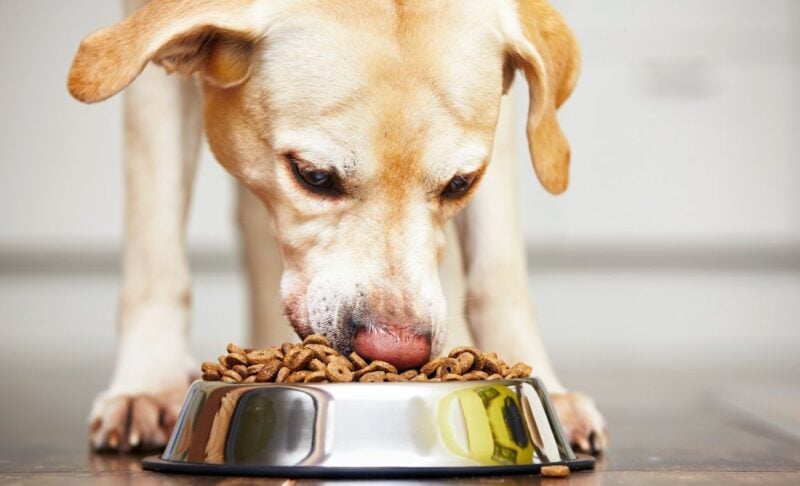

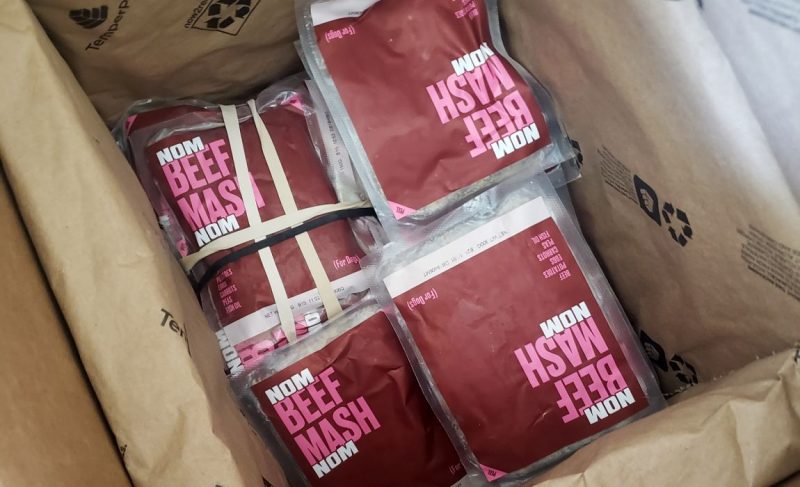
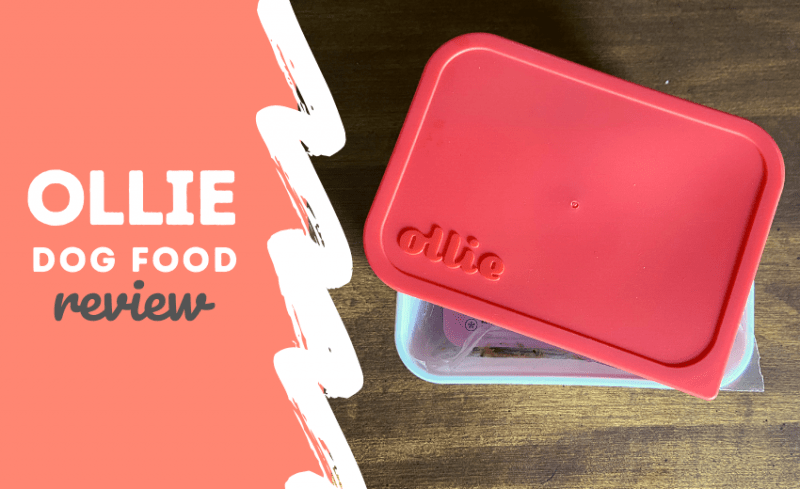
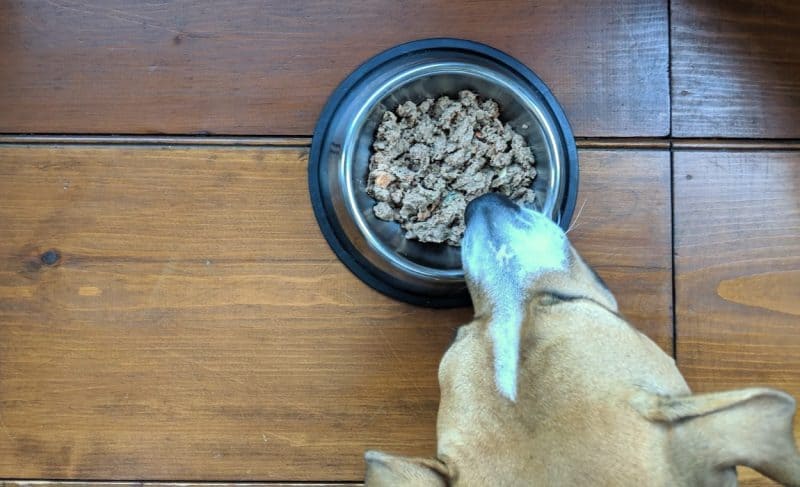
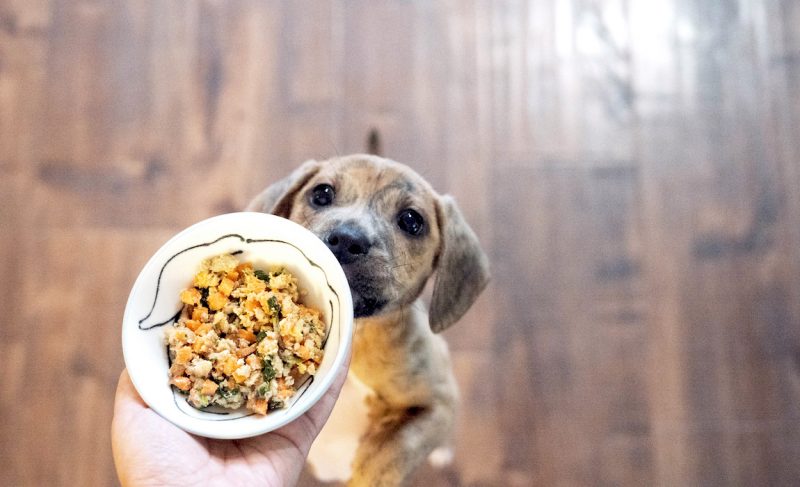

Leave a Comment